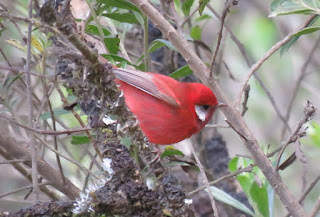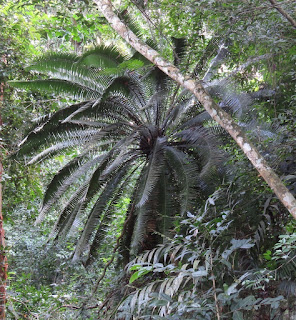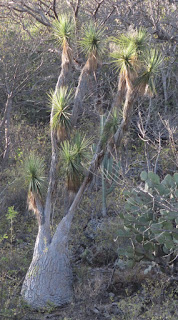My final tour of 2018 was the trusty of Oaxaca at Christmastime tour, the first foreign tour I led solo exactly 20 years earlier. I offer it only every other year now, though it’s probably popular enough to run it every year. But leading it means giving up a bunch of Christmas Bird Counts. In past years the organizers of the local Oaxaca CBC have worked around our schedule, as they always need more observers, but that wasn’t the case this year. We just birded as we usually do, starting with a lovely morning at Monte Alban ruins just outside the city.
That first
evening of the tour, and every December 23, is the Noche de Rábanos, where
locals compete in a radish-carving contest all around the zócalo, or town
square.
We spent a
few days in the pine-oak forest above town, seeing most of our target birds,
including Dwarf Jay and this Red Warbler.
Following a
picnic dinner on December 23, this Fulvous Owl came in to my calls. This may be
the same Fulvous Owl pair that has been here since I first found them nearly 9
years ago.
Only once
before, almost seven years ago, did I see this Rhynchostele cervantesii in bloom. I suspect it usually blooms a
little later in the year.
There are
more and more fancy restaurants in Oaxaca these years, with fewer of them
taking reservations. Some even dabble in “molecular gastronomy” using local
ingredients.
After
morning birding one day Jesús Hernández of Teotitlán del Valle gave us a wool
cleaning, carding, and spinning demonstration, as well as dye demonstration on
the palm of one of the participant’s hands.
Here are a
few photos of our two-night side trip to Tuxtepec, where we see species more
typical of humid tropical
lowlands: Collared
Trogon.
I was
delighted to spot two species of the odd family Marcgraviaceae along the Valle
Nacional cloud forest road. This one is Marcgravia mexicana.
Besides
seeing Sumichrast’s Wren well on the hike into a rough limestone rain forest, we saw these huge cycads, Dioon
spinulosum.
I wondered
if it would still be here after so many years, and it is: a huge sign with a
glaring typo. The Spanish word for isthmus is “istmo.”
On the way
back to Oaxaca City we stopped in the pine-oak cloud forest and found this
rarely seen Chinanteca Pine-Satyr, Paramacera
chinanteca.
We had one
last day in the dry intermontane valleys where we added a few more birds. This
Ferruginous Pygmy-Owl was very confiding.
Our final
group lunch was at a restaurant owned by one of the largest mezcal distillers,
and we get a chance to taste several kinds.
I had an
extra day on my own after the tour and visited the market downtown and stocked
up on a variety of dried chiles.































No comments:
Post a Comment